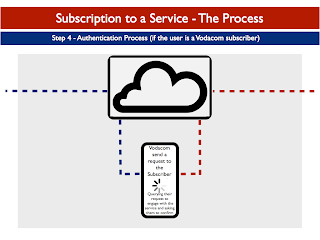There is a lot of pressure on content providers these days, unlike a couple of years ago when a subscriber would simply sms a keyword in order to be subscribed to a club - these days there are a number of hurdles in place that literally should stop any potential subscriber in their tracks.
The regulation, which is very similar in most countries, stipulates that there has to be a double opt in process. What this means is that there has to be an authorization process that verifies and authenticates any potential subscriber before they join a service.
Not only does a company have to abide by the regulatory bodies (i.e. WASPA in South Africa), but they also have the Business rules of the networks to abide by, the consumer protection act, the National Lotteries Act, the advertising standards authority etc.
This makes doing business in this landscape exceptionally difficult as one has to abide by not one set of regulations but many just to get a customer in to your world.
Some companies, like Via Media, Integrat, Bee Mobile, Zed, Strike Media, Sprint Media, Natta and Buongiorno are some examples of companies that are working in this area.
These companies achieve a feat very few others are able to do -and that is survive in an environment that is technically geared to stop them from trading - and yet they still manage to survive.
In my opinion it is the likes of these companies that are the leaders, drivers and innovators of marketing, of acquisition and conversion.
You want to know how to shift your business - look at what these guys are doing - BUT heaven forbid you try to replicate what they do - because you'll have to jump through hoops, walk on coals and swim with piranha - just to get yourself wet. Surviving all that is an entirely different story.
I've included a rough schematic flow of the process an online user has to follow - to join one of these services... below;
Now, you tell me - just how easy is it to join a subscription service?


























3 comments:
Hans, I completely agree. I think that consumers are treated very fairly insofar as subscription is concerned and given ample opportunity to make a decision. It boggles my mind when consumers try to claim nowadays that they never subscribed to a service or had no knowledge when clearly they not only expressed the intent to subscribe but also were clearly notified.
Hans,
i have a couple of questions:
one of the ways you get people to subscribe is via a normal web browser. this can be on a normal PC, no cell involved. what if someone knows another person's number, types it in the textbox, then wait to see if the SMS arrives, asks the other person what message he got, the other person might respond with the code, or the person has a pop-up notification on his cell(like iPhones) and the person playing the prank gets this activation code, types the activation code in, et voila, prank complete
all of this without the poor sod not even being actively involved in the process
sounds and is wrong
how do you ensure that minors don't fall into this trap by friends playing pranks?
@ Anonymous - when it comes to subscribing to a service through a web campaign, the process of subscription cannot be completed without a mobile phone being present as in all instances the password is sent through to the MSISDN number that has been entered in the input fields.
This process has been established to verify that the individual has indeed requested to access and join the service and it ensures that throughout the process of the request to join the service, the individual is notified of that request.
If there is indeed a 'prank' being played the opt in message should raise alarm bells. If that doesn't , the welcome message should raise even more alarm to the individual on whom the 'prank' is being played.
If there is a concern, parents should be able to make contact with the customer care of the related service, who in all instances be able to assist.
Post a Comment